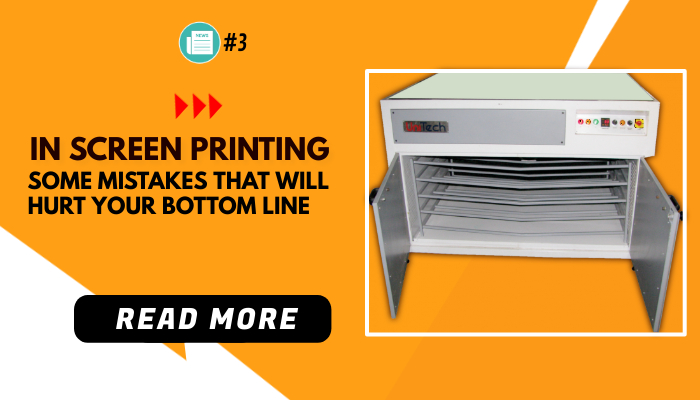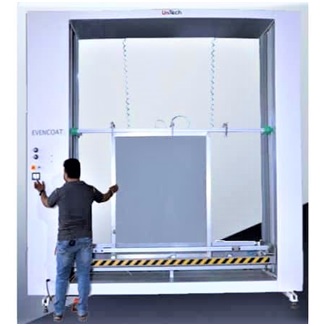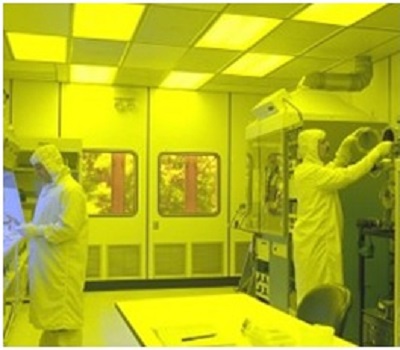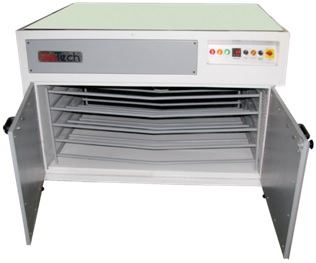Get the best out of you ”

Ignore Frame drying process and get poor print quality!
Screen frame drying is one of the most important variables but sadly nobody seems to take notice of it and lands oneself in deep trouble. Because it appears so simple, many printers tend to ignore the factors that lead to a correctly dried screen.
Many screen making shops operates in small cramped place with lot of machines jammed in one place they normally coats & dry their screens in bathroom which have plenty of moisture content. Screens are normally dry in vertical position which is totally wrong.
Screen drying involves more than just making sure emulsion is dry to the touch. It requires attention to the coating process, understanding of common drying procedures, and knowledge of the conditions that must be present to achieve reliable coated screens on a consistent basis.
Coating thickness
Before you learn how to dry the screens, you must understand the thickness of the coating. Many recommends that on the print side it should be 10 to 20% of the mesh thickness to achieve good stencil this percentage is called emulsion over mesh ratio EOM. For more info check detailed blog: What is EOM?Why is it so important?

Screen orientation during drying
Many screen shops do a good job at coating but fail miserably at drying the screen. this is very important factor but due to space crunch most of the screen printers dry the screen vertically. It is totally wrong as &when drying process continues emulsion slowly drip down due to gravity, making uneven coating thickness on one side.
All emulsion manufacturers recommend that the coated screen be dried horizontally, squeegee side up, so that the emulsion will level out on the print side of the screen and be thicker than on the squeegee side.
This is a result of gravity pulling the emulsion to the print side of the screen. Since the emulsion will be in front of the mesh during exposure, you will have less mesh interference and less chance of mesh marks, sawtoothing and other defects in your prints.
Proper drying condition:
o Proper temperature max. 40*C
o Proper airflow around all frames in cabinet
o Proper lighting closed in dark or under yellow lighting
Recommended proper temperature from manufacturer is around 40 ºC.Higher temperature can have adverse effect on the stencil. All diazo based emulsion is sensitive to heat. Actually, temperature above freezing will start decaying process of diazo sensitizer in coating.
Proper airflow is also very important as you will have light trap horizontal box for drying screens
horizontally but without proper airflow with ventilation, your screens will not dry in stipulated time. Hot air needs proper circulation to activate faster drying. Drying cabinet should not be airtight i.e. enough air should be escaped to maintain or reduce moisture in the cabinet. Otherwise drying process may take much more time than expected.
Lighting in the screen room or drying chamber should be restricted to any stray light under UV wave length will pre expose the stencil & that will be unusable. Yellow lighting is recommended.

Avoid hot spots. Get proper drying cabinet
For those thinking about adding any screen-drying cabinet from any manufacturer or buying a cheaper equipment for sake of just heating that needs some attention.
While heated cabinet models must be tested to ensure that they will provide uniform temperatures throughout. Unfortunately,Most cabinets often fitted with a small heaters and small axial fans to facilitate the drying process. If the heater is poorly directed inside the cabinet, you will experience hot spots and wide temperature variations in the cabinet.
Screens directly in the path of a heater's output may get exposed to higher temperatures on one side than the other and end up with non-uniform drying across the coating. Also, if the circulation within the unit is poor, the screens on the lower levels are likely to be subjected to a lower temperature, while the screens placed higher up get damaged from excessive heat that rises to the top. Make sure that the cabinet you use has both adequate airflow and heat displacement to prevent these conditions.

Conclusion
In order to make a high-quality stencil, it is important to maintain proper drying conditions in your shop. Be sure to dry your coated screens in an environment that is dust-free, protect them from UV light and dry at low temperatures to prevent premature crosslinking of the emulsion. Also make sure your drying area or cabinet has adequate airflow and that you control temperature and humidity throughout your operation. Store dried screens in proper light tight safe before actually using it.